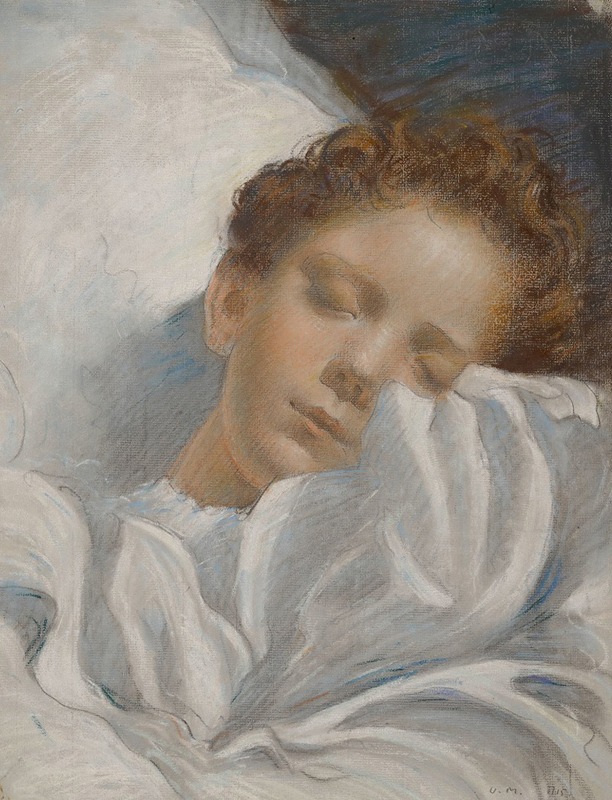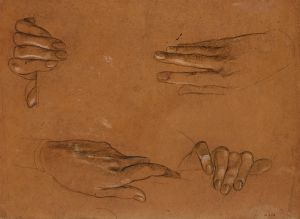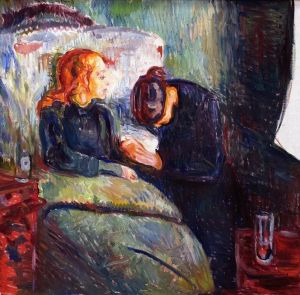
Study Of A Sleeping Child
A hand-painted replica of Luc-Olivier Merson’s masterpiece Study Of A Sleeping Child, meticulously crafted by professional artists to capture the true essence of the original. Each piece is created with museum-quality canvas and rare mineral pigments, carefully painted by experienced artists with delicate brushstrokes and rich, layered colors to perfectly recreate the texture of the original artwork. Unlike machine-printed reproductions, this hand-painted version brings the painting to life, infused with the artist’s emotions and skill in every stroke. Whether for personal collection or home decoration, it instantly elevates the artistic atmosphere of any space.
Luc-Olivier Merson was a French academic painter and illustrator, known for his detailed and often allegorical works. One of his lesser-known pieces is "Study of a Sleeping Child," which exemplifies his skill in capturing delicate and intimate moments. Although there is limited information available specifically about this painting, we can explore Merson's broader artistic context and style to provide a better understanding of this work.
Luc-Olivier Merson was born in Paris on May 21, 1846, and was a prominent figure in the late 19th and early 20th-century art scene. He studied under Gustave Chassevent-Bacques and Isidore Pils at the École des Beaux-Arts in Paris, where he honed his skills in classical and academic painting techniques. Merson's work often featured historical, religious, and mythological themes, rendered with meticulous attention to detail and a strong narrative quality.
"Study of a Sleeping Child" likely reflects Merson's ability to capture the serene and tender aspects of human life. While specific details about the painting's creation, dimensions, and current location are not readily available, it can be inferred that the work showcases Merson's characteristic precision and sensitivity. The subject of a sleeping child is a timeless theme in art, evoking notions of innocence, peace, and vulnerability. Merson's interpretation would have been informed by his academic training and his interest in creating emotionally resonant imagery.
Throughout his career, Merson received numerous accolades for his work. He won the prestigious Prix de Rome in 1869, which allowed him to study at the Villa Medici in Rome. This experience greatly influenced his artistic development, exposing him to classical art and architecture, which would later inform his compositions. Merson's reputation was further solidified when he was elected a member of the Académie des Beaux-Arts in 1906.
In addition to his paintings, Merson was also a prolific illustrator. He contributed to various publications and was known for his work on banknotes, stamps, and posters. His illustrations often displayed the same level of detail and narrative depth as his paintings, making him a versatile and respected figure in the art world.
While "Study of a Sleeping Child" may not be as widely recognized as some of Merson's other works, such as "Rest on the Flight into Egypt" or his designs for the Basilica of the Sacré-Cœur in Paris, it nonetheless represents an important aspect of his oeuvre. The painting likely captures the quiet beauty and introspective quality that Merson was known for, offering viewers a glimpse into the peaceful and intimate moments of everyday life.
Luc-Olivier Merson passed away on November 13, 1920, leaving behind a legacy of diverse and impactful works. His contributions to both painting and illustration continue to be appreciated for their technical skill and emotional depth. "Study of a Sleeping Child," though not extensively documented, remains a testament to Merson's ability to convey the subtleties of human experience through his art.


















